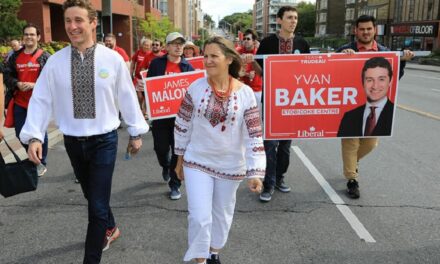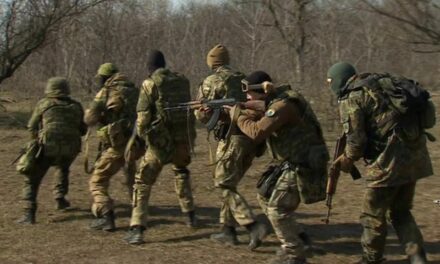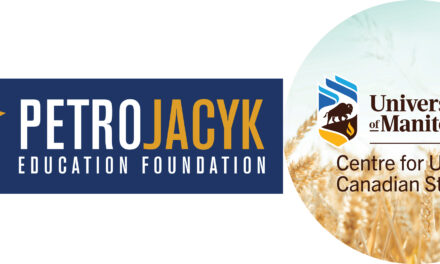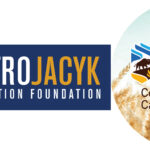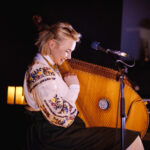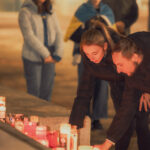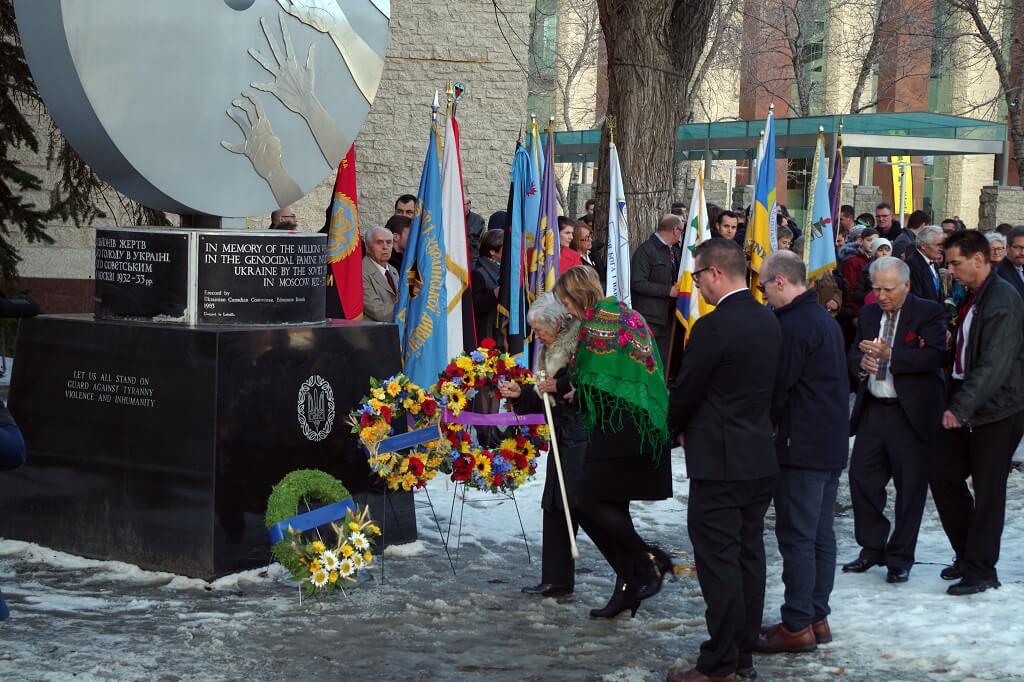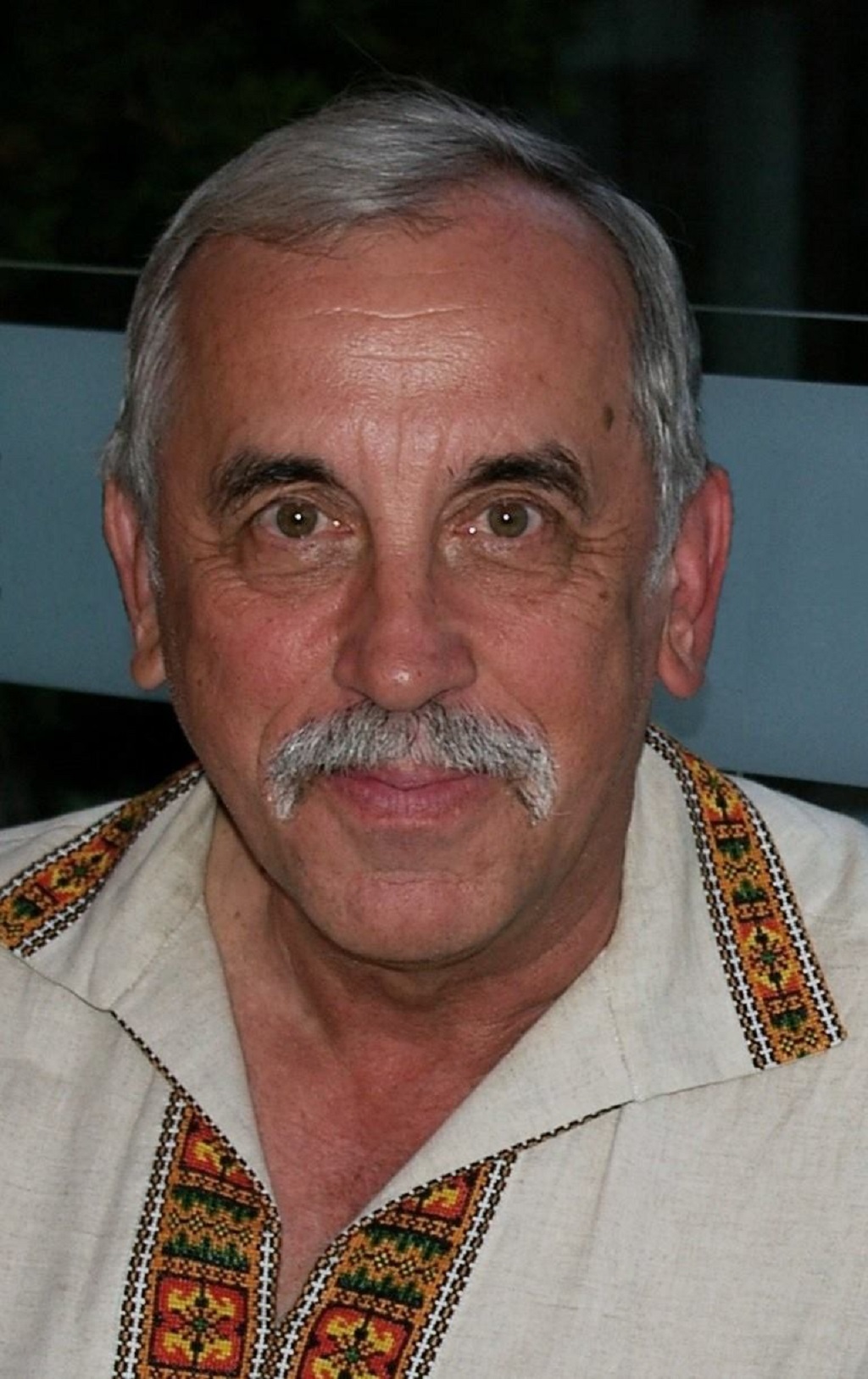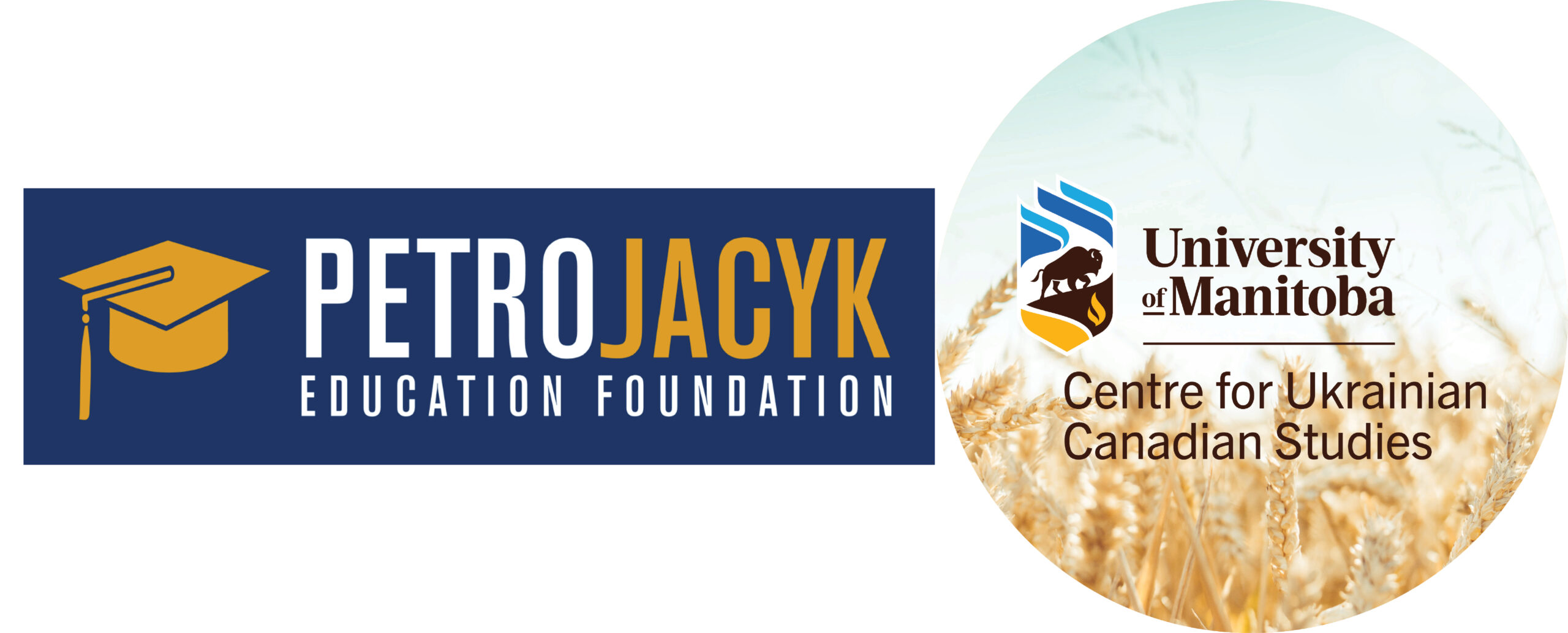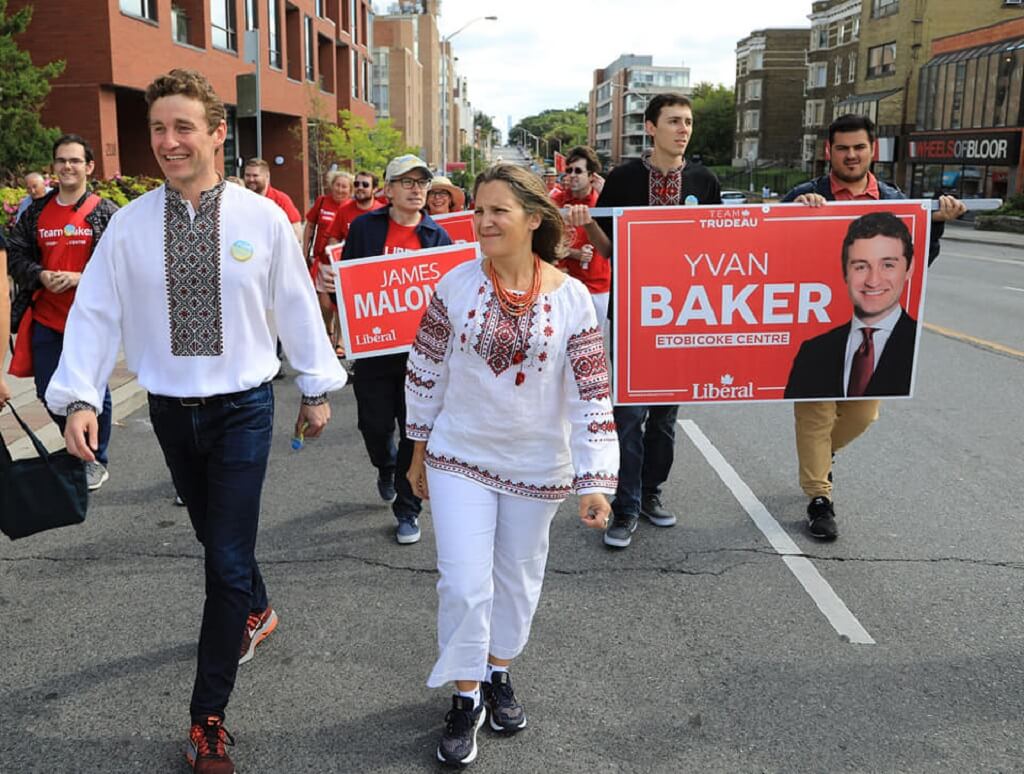Marco Levytsky, NP-UN Western Bureau.
Ukrainian Canadians held numerous protests and kept bringing the genocidal Holodomor to the attention of government and media in Canada, said the keynote speaker at the commemoration of the Holodomor at Edmonton’s City Hall, November 25.
“In Canada, people who had ties with Ukraine knew about the famine and were ready to help. In the summer of 1932 members of the Ukrainian community offered to send help to Ukraine through the Canadian Red Cross Society. The Soviet government turned down that offer,” said Dr. Serge Cipko, Assistant Director of the Canadian Institute of Ukrainian Studies at the University of Alberta, and author of the book Starving Ukraine: The Holodomor and Canada’s Response, at the event organized by the Ukrainian Canadian Congress, Edmonton Branch.
“Hampered by their efforts to save lives by sending relief through the Red Cross, Ukrainian organizations in Canada tried to alert the Canadian and other governments to what was happening in Soviet Ukraine. Protests were organized across the country.
“There were about 80 such protests during 1933 and 1934. There were several protest meetings here in Edmonton, and in other parts of Alberta such as Calgary, Willingdon, Vegreville, Myrnam, Smoky Lake, and Mundare. Typically, a protest meeting would take place in a community hall. Conditions in Ukraine would be described and any letters received from relatives would be read. Then the meeting would conclude with a drafting of a resolution that would be sent to the Canadian federal government in Ottawa, to the government of the United Kingdom, to the US government, and to the League of Nations.
“If the organizations received a reply to their petitions, they were usually told that relief could not be organized in the Soviet Union in the absence of any indication that such action would be acceptable to the Soviet government. The Ukrainian community in Canada was aware that the League of Nations, of which the Soviet Union was not a member, discussed the famine behind closed doors in September 1933. The League of Nations decided that ‘the only course open to the [protesters] would be for them to address themselves to organizations of a purely non-political character such as the International Red Cross’,” added Dr. Cipko, whose book was launched November 15.
Such protests did receive media coverage.
The Edmonton Journal and Edmonton Bulletin covered the ones in that city, the Vegreville Observer provided reports about the ones in Vegreville and Willingdon, and the Calgary Herald even published a piece about a protest in Hamilton, Ontario, while many of the Canadian newspapers featured articles about the famine-related demonstrations in New York and Chicago, noted Dr. Cipko.
Speaking on behalf of the federal government, Amarjeet Sohi, Minister of Infrastructure and Communities, stated that through the Holodomor that millions of Ukrainians were systematically and deliberately starved to death in an attempt to break a nation and destroy a people.
“This artificial famine had a devastating impact on the people of Ukraine for generations to come. Despite the brutality of the Holodomor, the Ukrainian people endured and, after decades of Soviet control, Ukraine achieved its independence in 1991. The federal government remains committed to Ukrainian sovereignty as well as their security and prosperity for future generations,” he said.
Sohi was joined on the podium by Randy Boissonnault, MP for Edmonton-Centre who stated: “We stand together so that world will know our collective sorrow at the memory of their deaths, we stand together so that we may say together “never again.
“We must never forget, we must never allow such things to happen again.”
Speaking on behalf of the provincial government, Deron Bilous, Minister of Economic Development and Trade, said “Holodomor is a word with two parts: Holod, which means hunger, and moryty, which means a slow, cruel death.
“Beginning in 1932, all food was removed by Soviet forces from targeted areas of Ukraine and the country’s borders were sealed, denying people the opportunity to search for food,” he stated
“At the height of the genocide, 25,000 people per day were dying from starvation.
“Outside of Ukraine, little was known about Holodomor, and even inside Ukraine, to speak of this event was forbidden.
“Once the campaign of engineered famine was complete Ukraine’s religious, artistic, intellectual and political leaders were arrested, deported or executed. The russification of Ukraine followed.
“For decades under the Soviets, any mention of the Holodomor was considered a crime and subject to imprisonment, exile or execution.
“And, today, we must think about all of this.
“We must remember it,” added Bilous.
Edmonton Mayor Don Iveson recalled the previous year’s disruption when a man interrupted the commemoration by lifting up a portrait of Stalin and shouting “liars” and “Nazis” at the participants.
“I was amazed as how peaceful the response was. That faced by someone who had hate and a false sense of history in his heart, you very quietly escorted him out,” he started.
“I would have wanted to do more than quietly escort him out. I think many of us did. But it speaks to the quality of this community, to the quality of our democracy, to the sense of calm and humanity that pervades an event like this. I was very proud of you. And I ‘m grateful to be here with you today. Grateful that no one has disrupted this event. But it illustrated exactly why we need to continue to do this. Until there is no more confusion about this, no more denial of the evil that happened. Such that the memory of those 10 million people can be properly honoured by everyone,” concluded Iveson.
UCC Edmonton President Orysia Boychuk noted that Edmonton’s Ukrainian Community played a significant and leading role in uncovering the truth and recognizing Holodomor as an act of genocide against the Ukrainian people.
“In 1983, Edmonton became the home of the first Holodomor monument in the world.
“On October 30, 2008, former speaker of the house Gene Zwozdesky was instrumental in leading the Alberta Legislature with passing Bill 37 to annually commemorate the Ukrainian Famine and Genocide (Holodomor) Memorial Day Act.
“In 2011, The Edmonton Catholic School District declared the last Friday in November as Holodomor Memorial Day within the school system.
“Today, new resource on the Holodomor geared to the Alberta curriculum in social studies has been completed for the Edmonton Catholic School Board.
“Currently, the Holodomor is included in the Alberta curriculum in Social Studies 20 and 30 at the grade 11 and 12 levels.
“Lesson plans for teachers on the Holodomor have been developed by Edmonton Catholic Schools and are available on their website for Kindergarten to grade 12.
“We must continue to keep Holodomor in the forefront by educating our community and our children to prevent history from repeating itself,” she added.
Master of Ceremonies Yarko Broda noted that the Holodomor directly affects the current geopolitical situation in Ukraine.
“Exterminating Ukrainians and replacing them with Russians created a population more amenable to Soviet rule. If not for the Holodomor, would the false notion of an East-West divide in Ukraine even exist? Would there, be such deep ethnic divisions in eastern Ukraine? Would Russian separatism and propaganda have found any fertile soil in the Donbas? The conditions created in post-Holodomor Ukraine are being exploited by the Kremlin to, once again, undermine an independent Ukrainian nation-state,” he said.
The ceremony opened with a Prayer Service conducted by Ukrainian Orthodox Bishop Ilarion Rudnyk of the Western Eparchy and Ukrainian Catholic Bishop David Motiuk of the Edmonton Eparchy, joined by concelebrating clergy. Responses were sung by the St. Josaphat Ukrainian Catholic Cathedral Choir conducted by Melanie Turgeon.
Survivors of the Holodomor were recognized. Present were Natalia Talanchuk, Anna Korownyk and Leonid Korownyk, who recited the latest poem he wrote about the Holodomor as he has done annually in recent years.
Following a musical duet by Daria Podilsky and Paul Horpyniuk, participants proceeded to the Holodomor Monument outside City Hall for a wreath-laying ceremony.
Share on Social Media






